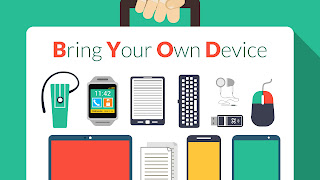Twitter Feed
Cloud Computing Price-Performance Could Vary By 1000%!
by Kevin L. Jackson Yes, you read that right. The price/performance of your cloud computing infrastructure could vary as much as 1000 percent depending on time and location. High levels of…
E-book: Educate Yourself With Dell Insight Partner Views on Cybersecurity
Data security breaches and hacker attacks on private businesses, health organizations and government agencies in the U.S. have grabbed headlines with increasing frequency, it seems. There is zero doubt about…
IEEE Cloud Computing Magazine Focuses On GovCloud
Today I am especially proud and honored to publicly announce my appointment to the IEEE Cloud Computing Magazine Editorial Board! I am truly appreciative to Dr. Alan Sill and Dr.…
Is Social Media Right For Your Small Business?
Everyone from pre-teens to granddads, does social media today. With Twitter, Instagram, Facebook and many newer ways to stay in the know popping up every day, picking the right platform…
Rob Davies, ViON SVP, Talks about Government Cloud Computing
ViON solves complex enterprise problems by combining passion and agility to deliver the most effective, innovative solutions because commitment to mission success is in their DNA. One of the ways…
New Approaches for New Big Data Insights
by Melvin Greer Business Intelligence has matured as a core competency necessary to sustain competitive advantage. Organizations of every size and industry are generating valuable data with each interaction, and…
How to Put Public Sector Data Migration Hassles on the Road to Extinction
With careful planning and the right technology, Federal, State and Local Government IT Leaders can overcome fears of data migrations, breaking free from archaic procedures to lead the pack By…
Would you build your house from a Visio diagram?
Would you even hire an architect that highlighted hand drawn diagrams and spreadsheets as their design tools of choice? Of course you wouldn’t. Not using computing aided design (CAD) as…
Industry leaders set cloud computing security benchmarks
Security has long been the No. 1 cloud computing business concern. Although the apprehension is absolutely valid, cloud computing business decision and strategies are all too often driven by the…
The Science and Art of Business Leadership
Business leadership is both science and art. The scientific aspects revolve around finance, organization, products and service. Artistic aspects include relationships, market trajectories and business strategies. While many focus on…
- Increased employee mobility (63%), satisfaction (56%) and productivity (55%) dominate as the top drivers of BYOD. These employee related drivers are considered more important than reduced costs (47%).
- Security (39%) and employee privacy (12%) are the biggest inhibitors of BYOD adoption.
- 20% of surveyed organizations have suffered a mobile security breach, primarily driven by malware and malicious WiFi.
- Security threats to BYOD impose heavy burdens on organizations’ IT resources (35%) and help desk workloads (27%).
- Despite increasing mobile security threats, data breaches and new regulations, only 30% of organizations are increasing security budgets for BYOD in the next 12 months and 37% have no plans to change their security budgets.
- 72% – Data leakage/loss
- 56% – Unauthorized access to company data and systems
- 54% – Downloading of unsafe apps or content
- 52% – Malware
- 50% – Lost or stolen devices
- 49% – Vulnerability exploitation
- 48% – Lack of control on endpoint security
- 39% – Infrequent software updates
- 38% – Compliance
1. Create your policy before procuring technology: To effectively use mobile device management (MDM) technology for employee owned devices Policy must precede technology. Also note that these policies will have broad corporate-wide implications for IT, HR, legal, and security.
- Mobile device management
- Application security assessments
- Application testing services
- Application source code security assessments; and
- Embedded device security.
This post was brought to you by IBM Global Technology Services. For more content like this, visit ITBizAdvisor.com.
( Thank you. If you enjoyed this article, get free updates by email or RSS – © Copyright Kevin L. Jackson 2017)
Cloud Computing
- CPUcoin Expands CPU/GPU Power Sharing with Cudo Ventures Enterprise Network Partnership
- CPUcoin Expands CPU/GPU Power Sharing with Cudo Ventures Enterprise Network Partnership
- Route1 Announces Q2 2019 Financial Results
- CPUcoin Expands CPU/GPU Power Sharing with Cudo Ventures Enterprise Network Partnership
- ChannelAdvisor to Present at the D.A. Davidson 18th Annual Technology Conference
Cybersecurity
- Route1 Announces Q2 2019 Financial Results
- FIRST US BANCSHARES, INC. DECLARES CASH DIVIDEND
- Business Continuity Management Planning Solution Market is Expected to Grow ~ US$ 1.6 Bn by the end of 2029 - PMR
- Atos delivers Quantum-Learning-as-a-Service to Xofia to enable artificial intelligence solutions
- New Ares IoT Botnet discovered on Android OS based Set-Top Boxes


